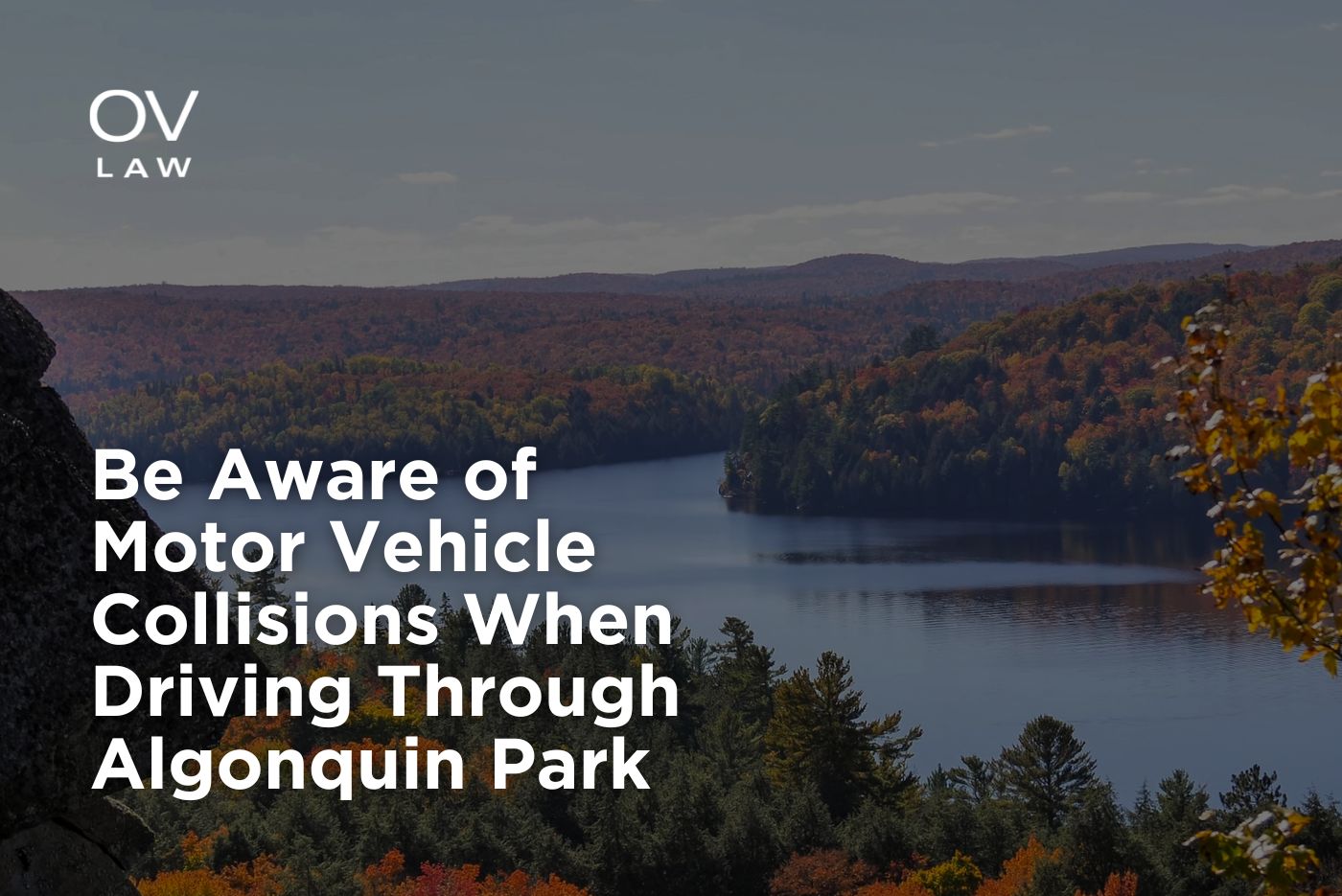Be Aware of Motor Vehicle Collisions When Driving Through Algonquin Park

Algonquin Park is Ontario’s largest Provincial Park, and the drive along the Highway 60 corridor through the southern tip of the park can be spectacular. The scenery, the park’s attractions, and the chance to see wildlife entices many thousands of visitors every year. But drivers should be aware that this road trip is not without some significant hazards.
First and foremost, drivers must keep a vigilant watch for wildlife on the highway, especially at night and around dusk and dawn. Large animals like moose and deer are often attracted to the salt leftover from winter maintenance on the highway. A collision with one of these animals can result in serious injuries to occupants, as well as significant damage to even large vehicles like transport trucks. Drivers should reduce their speed and eliminate any distractions, paying close attention to the road ahead at all times. Highway 60 has many twists and turns, around which a large animal may be waiting in the middle of the road.
Second, remember that cell phone service in the park is limited and can be unreliable. Although the Highway 60 corridor does have some coverage, it is quickly lost on secondary roads and completely absent when venturing further into the park.
Lastly, if you decide to stop your car to view wildlife or take photos of the breathtaking scenery, make sure to do so off the travelled portion of the highway, and with your hazard lights activated. Take advantage of the many designated parking areas and scenic lookouts to safely stop, but keep in mind that a permit is often required to use these facilities.
Remember that Algonquin Park is a recreational area, and roads and facilities will be shared by hikers, campers, cyclists and motorcyclists, all of which potentially increase the risk of accidents. So drive carefully, and enjoy the view!
Oatley Vigmond is Ontario’s Personal Injury Law Firm. If you or someone you know has been hurt in a motor vehicle collision, we may be able to help.
Written By

Adam Little earned his undergraduate degree from the University of Toronto in 1996. He graduated from Queen’s University Faculty of Law in 2000 and was called to the bar in 2002. Adam was practicising on Bay Street for a leading Toronto litigation firm that represented doctors in medical malpractice claims when he realized that helping people through personal injury litigation was what he wanted to do. “I wanted to work for the best,” he said. A partner at Oatley Vigmond had written the best-known book available about addressing jury trials, which Adam had read and admired. He wrote to the partner, went through an intense interview process and became a partner at the firm in 2005.
